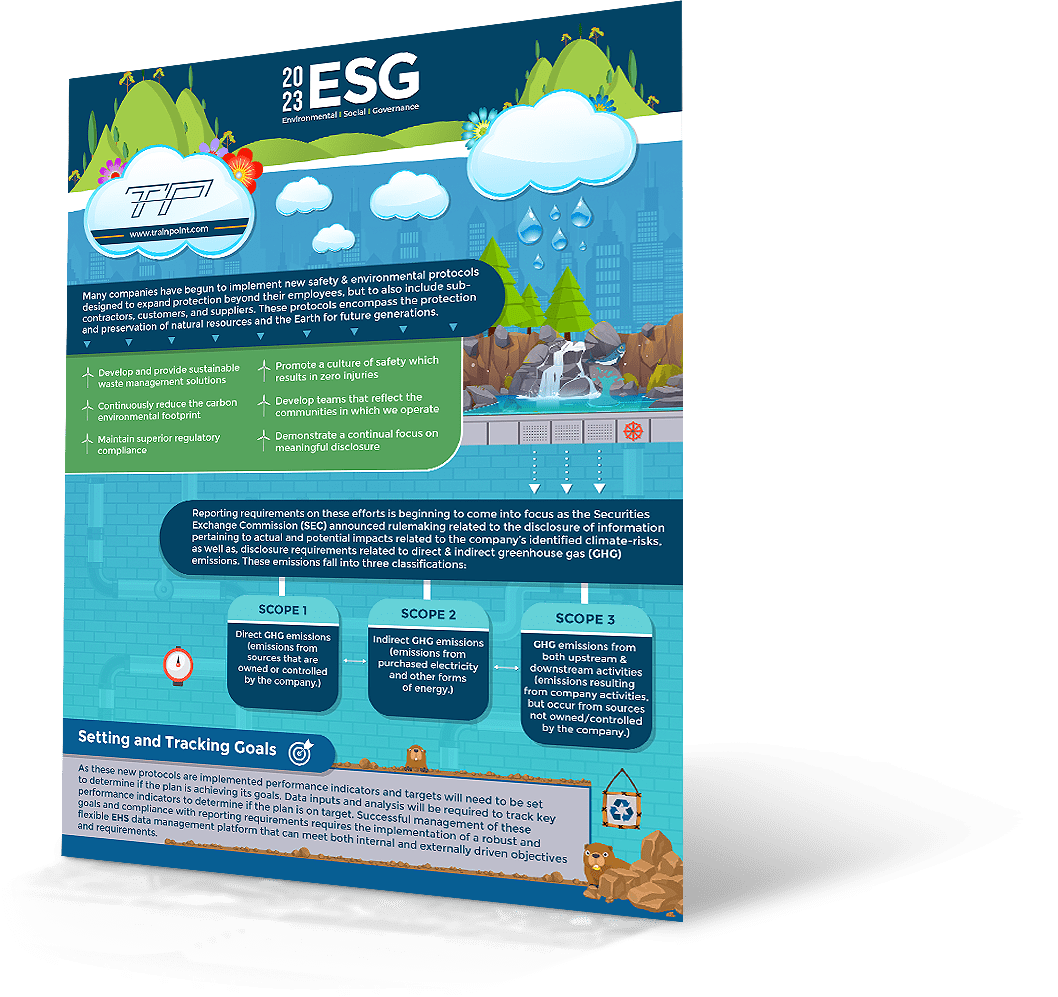What is ESG?

What is ESG?
Many companies have begun to implement new safety and environmental protocols designed to expand protection beyond their employees, but also to include sub-contractors, customers, and suppliers. These protocols encompass the protection and preservation of natural resources and the Earth for future generations.
Techniques They Are Using:
- - Maintain superior regulatory compliance
- - Continuously reduce the carbon environmental footprint
- - Develop and provide sustainable waste management solutions
- - Promote a culture of safety which results in zero injuries
- - Develop teams that reflect the communities in which we operate
- - Demonstrate a continual focus on meaningful disclosure
Reporting requirements on these efforts is beginning to come into focus as the Securities Exchange Commission (SEC) announced rulemaking related to the disclosure of information pertaining to actual and potential impacts related to the company’s identified climate-risks, as well as disclosure requirements related to direct and indirect greenhouse gas (GHG) emissions. These emissions fall into three classifications.

SCOPE 1
Direct GHG emissions (emissions from sources that are owned or controlled by the company).
SCOPE 2
Indirect GHG emissions (emissions from purchased electricity and other forms of energy).
SCOPE 3
GHG emissions from both upstream and downstream activities (emissions resulting from company activities, but occur from sources not owned or controlled by the company).
Setting and Tracking Goals
As these new protocols are implemented, performance indicators and targets will need to be set to determine if the plan is achieving its goals. Data inputs and analysis will be required to track key performance indicators to determine if the plan is on target. Successful management of these goals and compliance with reporting requirements requires the implementation of a robust and flexible EHS data management platform that can meet both internal and externally driven objectives and requirements.